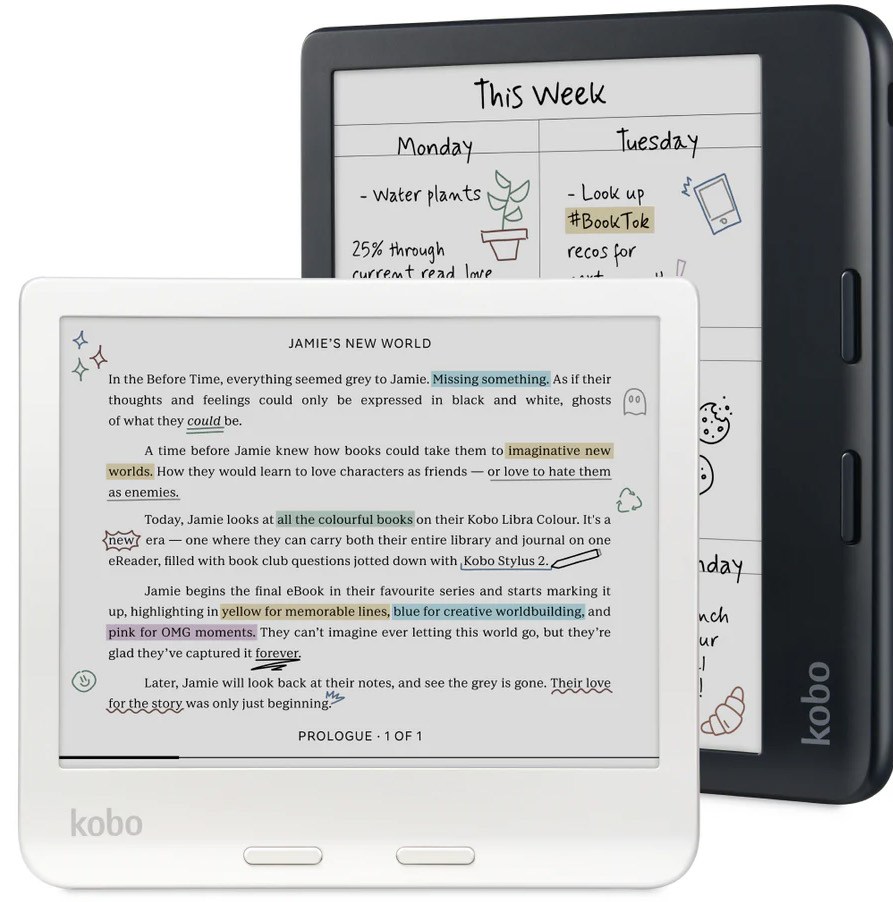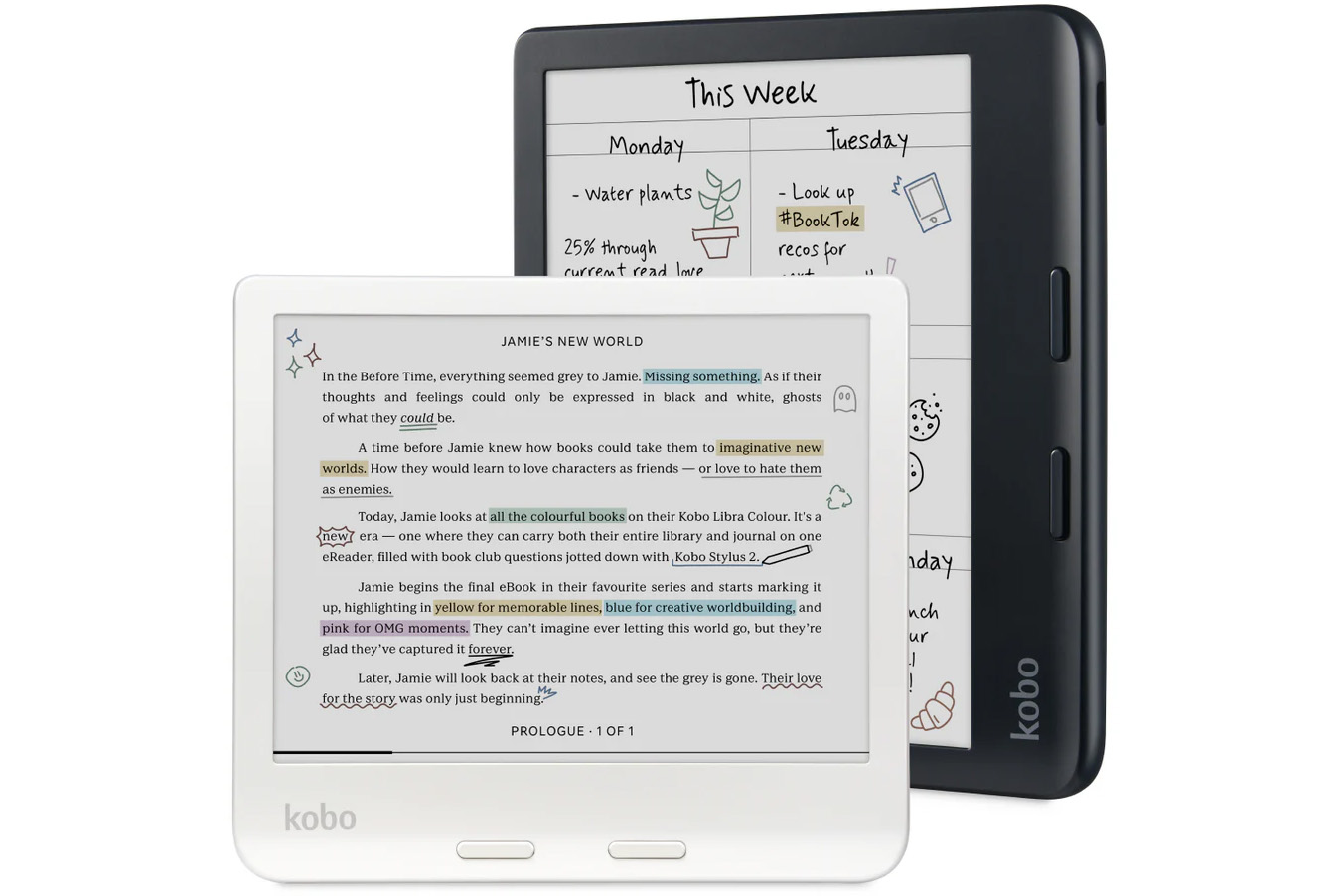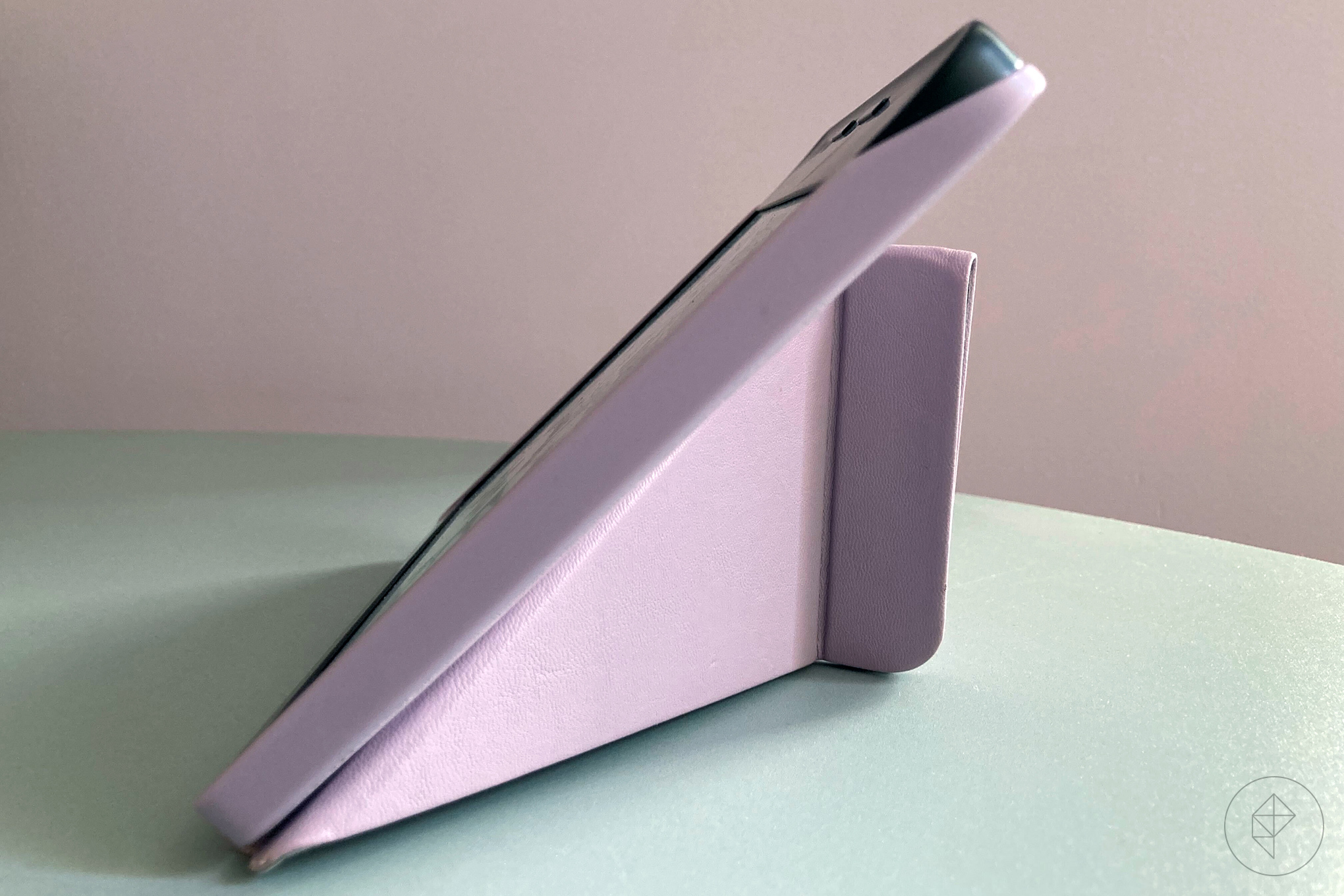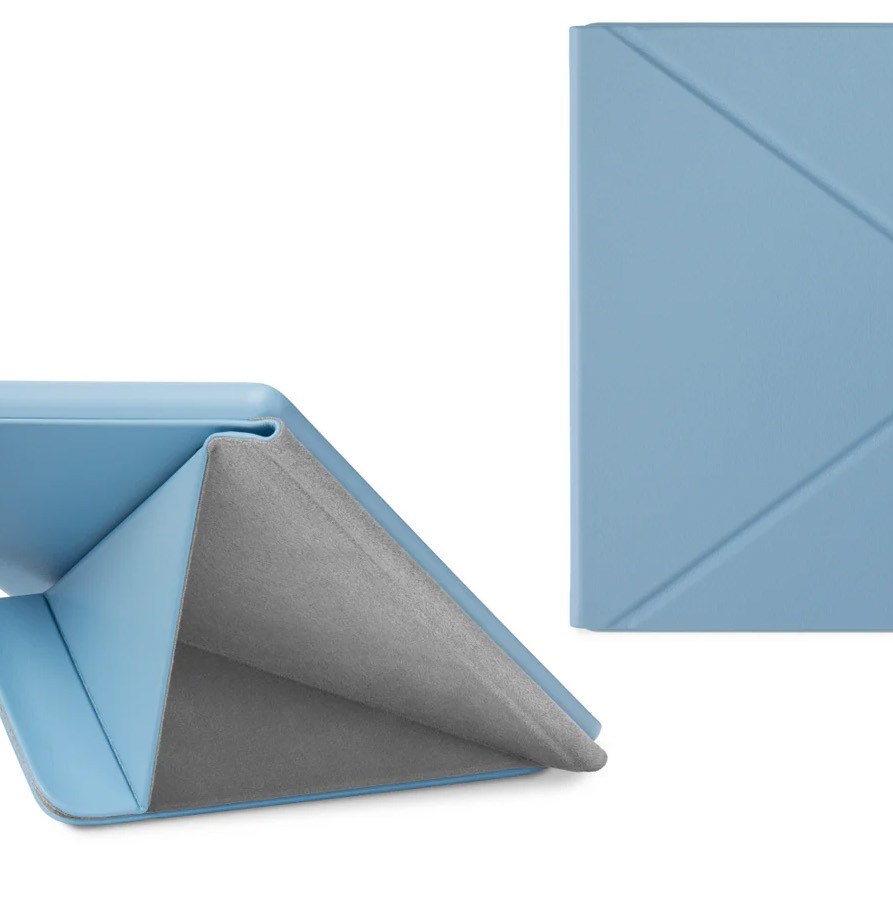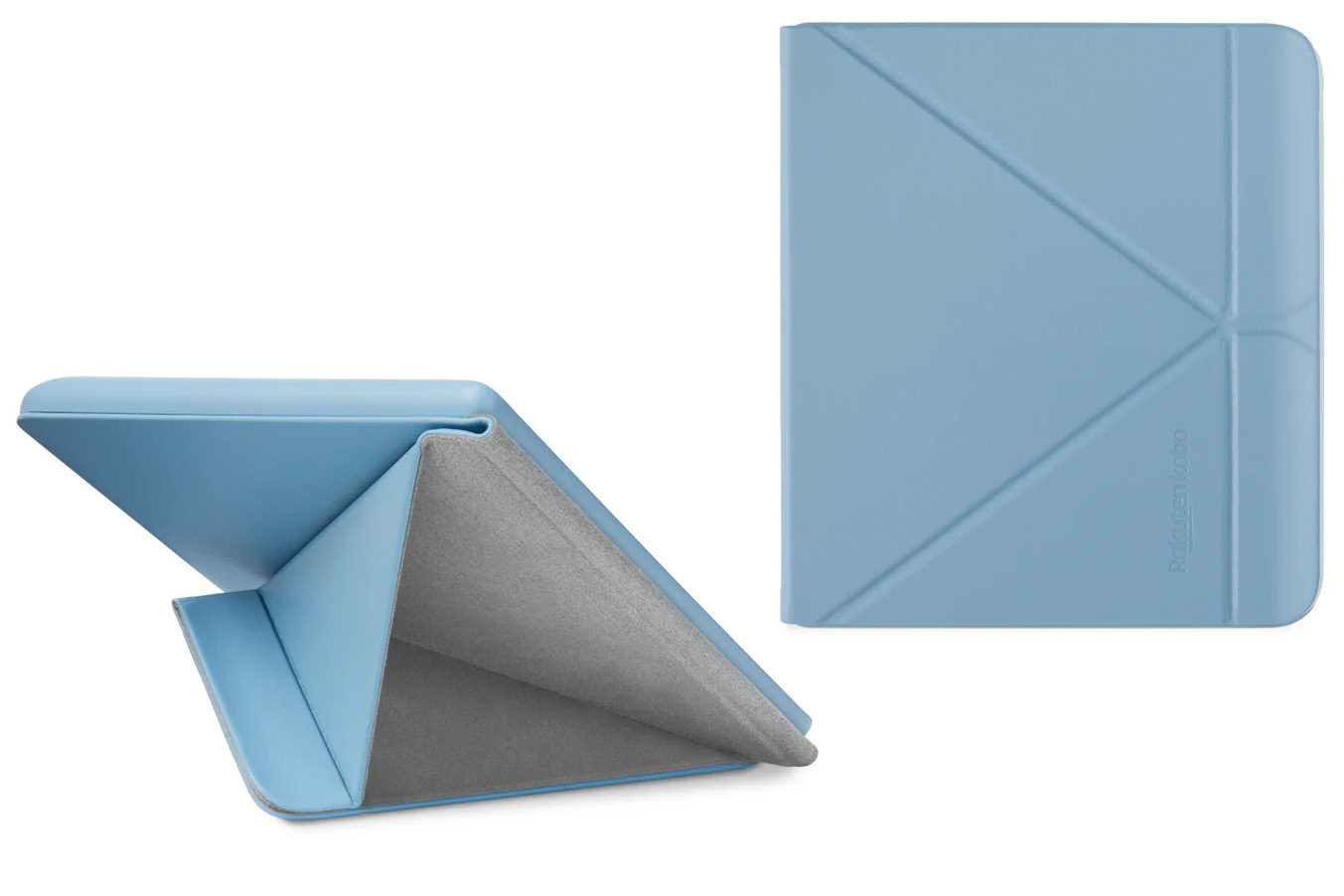I am not normally an Electronic Device Evangelist. While I’ll wax eloquent about a comic or a game, you won’t find me going on about my new iPad or whatever. But when someone casually mentions that they’re thinking about getting an e-reader and they’re not sure what kind, I burst through the wall like the Kool-Aid Man to ask if they’ve welcomed the gospel of Kobo into their hearts.
For years, I thought an e-reader was a redundant luxury. I didn’t need to read digital books; I could get real books. There’s a library three blocks from my apartment, and there are two indie bookstores on the way there! And even if I did have a digital book, I could read it on my phone — or the massive iPad Pro I keep to read comics on. But now that I have a nice e-reader, specifically the Kobo Libra, I know what an immediate quality-of-life improvement it is.
Take library books, for example. A good e-reader will be able to search, reserve, and check out e-books from your local library right from the device (Kobo’s Overdrive/Libby integration is a little janky, but it works). You haven’t known joy until you’ve realized you want to read a book, tapped a few buttons on your e-reader, and gotten that whole book from the library instantly, knowing that it will return itself automatically on its due date. And that’s without even getting into the satisfaction of supporting your local library through frequent use of its catalog.
The other baseline job of an e-reader that my Kobo excels at is reading comics. Not the digitally colored, magazine-style pamphlet that’s standard of American comics — for that, you really do need a color tablet. Even color E Ink displays are not yet vibrant enough to display color comics as they truly look. But an e-reader screen reproduces the smaller, black-and-white paperback format of manga with great fidelity. With my Kobo and a good library card, I’ve been able to delve into Delicious in Dungeon, Mermaid Saga, and tons more without packing my one-bedroom apartment to the gills with book volumes or even opening my wallet.
These are both things I’d expect from any e-reader, but the Kobo excels in other ways. For one thing, it’s a well-made book-reading device from a company that does not have a decadeslong history of exerting monopolistic pressure on the publishing industry. And this may be less universal an interest, but to me and a lot of other friends and colleagues, it’s the Kobo’s inbuilt Pocket integration that really raises eyebrows.
We’re constantly online and constantly finding articles, links, and sites we want to read but don’t have time to read right that second. For some of us who will remain nameless, that manifests in hundreds of open browser tabs. Or folders full of bookmarks. Or, for me at least, links sent to the Pocket app — another graveyard of great reads. We swear we’ll get to them before the heat death of the universe, and then we never do.
But what if the things I toss in Pocket automatically show up on the object that I pick up specifically when I want to read something? That means I actually read them. Pocket integration is feasible with e-readers like the Kindle, to be sure, but it’s not without several hoops and third-party solutions. Here, it’s a feature out of the box. And that’s the magic that having a Kobo has brought into my life.
My actual desktop and portable computers do a million different things, as does my iPad. My phone? Don’t get me started on how many distracting, attention-demanding, necessary things are on my phone. My PlayStation is for games and movies because it’s the only disc player I own. Even my TV has apps!
That’s what really gets me gazing at my Kobo Libra as lovingly as I would at a favorite pet, as it lies on my bed stand or nests quietly in my bag. Having a device that’s just for One Thing means that it can be designed to do that One Thing very carefully.
Take the Libra’s recycled faux-leather case, which — while sold separately — is, in my opinion, absolutely essential to its appeal. The cover does this clever magnetic origami fold that turns it into a stand that works at any angle (while the screen rotates as needed, and can be locked in place via a toggle on every open page). I’ve also discovered that the fold in the cover makes for a decent grip when holding it one-handed, like a built-in PopSocket (and that’s saying something, because my hands are so small that I buy child-size gloves). But most importantly, the cover stand allows for hands-free reading while lying on your side in bed — the dream of all before-bed readers.
These benefits might not be as compelling if you’re already sunk into another e-reader’s ecosystem and would lose a lot of purchases that won’t port out of, say, the Kindle Store. And if you’re someone who buys a lot of e-books, you may decide to keep your Kindle and your access to Prime Day discounts. But if you’re someone who is just looking to get started in the world of reading books on a device, and has access to a good library or library system, I can’t recommend a Kobo enough.
My little Kobo Libra does a few simple, necessary things. It does them very well, and when I open it up, it’s to read and never to do anything else. I don’t have that kind of relationship with almost any other computerized device that I own, and I enthusiastically encourage you to forge that kind of bond with your own friendly little book-reading device.

